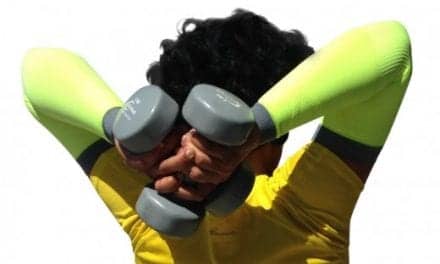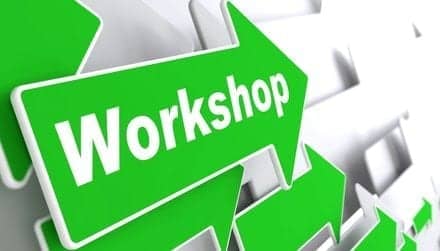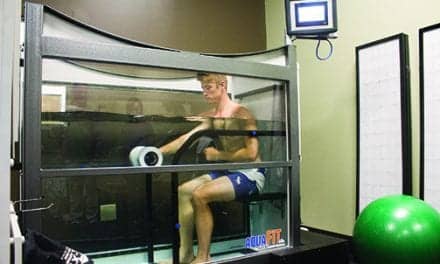Innovative technology and rehabilitative care can aid in the rehabilitation of patients with neurological injuries
By Kirk C. Randall, PT, MS; Margaret L. Frantz, PT, DPT; and Amy Little, PT, DPT
Patients with neurological injuries, including stroke, spinal cord injury, traumatic brain injury, and multiple sclerosis, often have an array of functional deficits. These functional deficits may disrupt balance and gait, which increases the patient’s risk of falling, thereby promoting social isolation and sedentary behaviors.1 Survivors are now becoming more active and able to participate more fully in society because of new technologies aimed at improving balance and gait through the concept of neuroplasticity.
Neuroplasticity is a primary component necessary to achieve improved function and motor learning. It is an adaptation or change in the connections of the neurons in the brain. The connections can either be strengthened during motor learning and/or growth and development or weakened in the event of damage, as in the case of a stroke patient. New technologies may aid in the recovery of such motor planning in patients with neurological injuries.
Standard of Care
The standard of rehabilitation care for these neurological injuries is strengthening, balance, aerobic training, functional activity, and over-ground assisted gait training. Additionally, the use of assistive devices and/or orthotics and ongoing patient education provided by a physical therapist can be crucial components of rehabilitation. In recent years, there has been a greater understanding of the brain’s potential for clinically meaningful recovery and adaptation following injury. When intensive motor practice is implemented, functional gains may be possible—even in the chronic phase or perceived plateau—following a stroke or other neurologic injury.
Interventions and Technology
Mary Free Bed Rehabilitation Hospital (MFB) in Grand Rapids, Mich, is an inpatient and outpatient neurological rehabilitation center that treats more than 6,000 new
neurological evaluations per year. The facility’s PTs aim to help restore balance and gait, and standardized outcome measures are used to determine the effectiveness of old and new technologies. The most commonly used outcome measures include the 6 and 10 Meter Walk Test, Dynamic Gait Index, Berg Balance Scale, Function In Sitting Test, and Timed Up and Go.
Current interventions used at MFB include: Lokomat, SMART Equitest, Kickstart, LiteGait, and Bioness L300 Plus. The Lokomat, manufactured by the Switzerland-based company Hocoma, is a functional gait training orthosis developed to provide robotic-assisted locomotion for patients with lower-extremity mobility impairments, through the use of electromechanical-supported walking. It features a virtual reality visual display that provides the patient with immediate feedback about goal-oriented tasks, such as walking through rolling hills or collecting coins. It also allows the therapist to assess the effort exerted by the patient through biofeedback screens, evaluate completion of tasks via the virtual reality activities, and provide better verbal cues and encouragement for muscle activation.
NeuroCom, a division of Natus, headquartered in Clackamas, Ore, offers the SMART Equitest, which provides visual biofeedback and an objective assessment of postural stability and balance control under various dynamic conditions. The assessment can take place on a stable or unstable surface with a static or dynamic visual environment, meant to simulate real-life encounters. It is also capable of manipulating both visual and somatosensory information.
Kickstart from Cadence Biomedical, Seattle, is a kinetic orthoses that uses spring tension to create energy. The energy is used to provide assistance for a more natural stride during ambulation for individuals with lower-extremity weakness. It is a wearable orthosis that does not use motors or batteries. The stored energy in the spring provides assistance during the initiation of hip flexion beginning at the toe-off phase of the gait cycle and continuing through the swing phase of gait until heel strike.
Tempe, Arizona-based Mobility Research produces LiteGait, which is a partial weight-bearing gait-training device. LiteGait assists with the control of posture and balance while ambulating over a treadmill or ground. This allows the clinician to facilitate lower-extremity movement manually. Use of a harness allows progression from partial to full weight-bearing, unilateral or bilateral support. The Solo-Step System, manufactured by Sioux Falls, SD-based Solo-Step, is another device that offers body weight support.
The L300 Plus from Bioness Inc, headquartered in Valencia, Calif, is a wireless device that consists of a thigh and foot component. The thigh component assists with quad or hamstring facilitation to assist with knee flex or extension. The foot component provides stimulation to the anterior tibialis, providing dorsiflexion assistance. The unit is individually programmed and sends low-level electrical stimulation to specific nerves and muscles used in the ankle and knee during ambulation.
Gait Therapy and Training Research
Several research studies provide supporting evidence, indicating that increased time spent on exercise (augmented exercise therapy) in the first 6 months post-stroke results in significant improvements in walking ability and speed as well as extended activities of daily living.2 Another small study of 18 patients with chronic hemiparesis reported that using a robotic device coupled with virtual reality over 4 weeks improved walking ability in the community better than the robot training alone.3
A review of conventional gait training (without high-technology aids) involving almost 500 participants concluded that there was limited evidence suggesting small benefits for gait speed and 6-minute walking time.4 Positive findings have also been reported in a recent observational study of intensive robotic and manual gait therapy in sub-acute stroke.5
Emerging Technology for Rehabilitation
Emerging technologies are helping patients to reach potentially higher levels of function while decreasing the levels of stress on therapists, as well as the potential for injury. Technologies that MFB plans to acquire in the next 15 months include the ZeroG Dynamic & Static Gait and Balance Training System from Aretech LLC, based in Ashburn, Va, and the Tollos Manual Gait system. The ZeroG allows balance and gait training activities to be conducted in a safe environment for patients who are affected by severe gait impairments. It is an overground body-weight-supported system attached to a trolley track, thereby allowing both static and dynamic training.
The Tollos from Tollos Inc, Owings Mills, Md, is a static lift in which the secure harness system can be used for rehabilitation activities.
Therapists are using evolving technology to provide the intensive motor practice needed to enable patients to have a clinically meaningful recovery following a neurologic injury. Recovery is no longer limited to the acute phase of the injury, but rather the patient may experience functional gains and adaptation even throughout the chronic phase of the injury. PTP
Kirk Randall, PT, MS, is the primary physical therapist with the outpatient stroke and brain injury program at Mary Free Bed Rehabilitation Hospital. He has expertise in both inpatient and outpatient orthopedics and neurological rehabilitation. Randall is certified using the Lokomat and Bioness L300 Plus.
Margaret L Frantz, PT, DPT, is an outpatient physical therapist at Mary Free Bed Rehabilitation Hospital. She has successfully completed user-level training for the Lokomat for the purpose of robotic rehabilitation therapy and also is certified for the Bioness L300 Plus.
Amy Little, PT, DPT, is an outpatient physical therapist at Mary Free Bed Rehabilitation Hospital who works primarily with the post-concussion, stroke and brain injury programs. For more information, contact [email protected].





